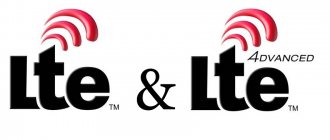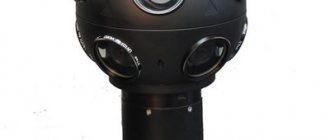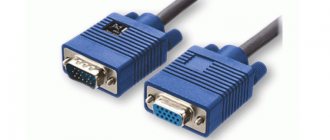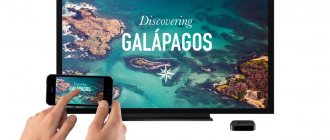What is Bluetooth?
Bluetooth 5.0 is the latest version of the Bluetooth wireless technology standard. It is commonly used for wireless headphones and other audio equipment, as well as wireless keyboards, mice and game controllers. Bluetooth is also used for communication between various smart home and Internet of Things (IoT) devices.
The new version of the Bluetooth standard means various improvements, but only when used with compatible peripherals. In other words, you won't see any benefit from upgrading your phone to Bluetooth 5.0 if all your Bluetooth accessories were designed for an older version of Bluetooth. However, Bluetooth is backwards compatible, so you can continue to use your existing Bluetooth 4.2 and older devices with a Bluetooth 5.0 phone. And when you buy new Bluetooth 5.0-enabled peripherals, they'll perform better thanks to your Bluetooth 5.0-enabled phone.
Reviews
Bluetooth. A technology that twenty years ago completely revolutionized ideas about the possibilities of data transmission. Back in 1998, a group of companies specializing in the development and production of mobile phones, multimedia gadgets and software (Ericsson, IBM, Intel, Nokia, Toshiba) presented to the public a unique technology for economical and extremely convenient radio communication, allowing the exchange of data protocols over a short distance using compact personal devices.
The term Bluetooth itself appeared with the light hand of the Swedes from Ericsson. One of the legendary rulers of Scandinavia was called Harald I Blue-toothed, nicknamed the Uniter, hence the logo of the new standard (two runes - “haglaz” and “berkana”).
How it works
Bluetooth technology allows you to transmit images, voice, video, audio, text messages (at speeds up to 64 Kbps). For wireless information transmission, asymmetric (721 Kbps in one direction and 57.6 Kbps in the other) or symmetric (432.6 Kbps in both directions) methods are used. In fact, the Bluetooth device built into the gadget is a radio transmitter (2.4 GHz frequency) capable of establishing communication between gadgets at a maximum distance of up to 100 meters. Most often, the power of a Bluetooth chip is rated at 10 meters. This range of action ensures low energy consumption of the gadget’s battery or battery, which, in turn, guarantees the relatively small dimensions of the device and the low cost of its components.
The transmitter operates on the FHSS (Frequency-Hopping Spread Spectrum) principle. This technology clusters the transmitted data into separate packets, and then broadcasts them according to a pseudo-random principle, periodically changing the transmission frequency (changes are made up to 1.6 thousand times per second). In this case, only those gadgets that are configured to one pattern, the so-called transmission pattern, can transmit and receive information. At the same time, any other devices will be able to perceive data transmission only as white noise.
A little history
The origins of this technology can be traced back to 1994. It was then, at the dawn of multimedia, that the then leading manufacturer of technical equipment for mobile communications, Ericsson, offered Bluetooth as an alternative to cable data transmission. It was assumed (and not without reason) that this technology would be actively used for high-speed data exchange between personal computers, as well as various peripheral gadgets, gaming terminals and joysticks, mobile phones and headsets, etc.
Over the rather long history of this original wireless technology, many different versions have appeared, which each time surprised with their new capabilities. The first sign is Bluetooth technology standard 1.0 and 1.0 B, which appeared back in 1998. Due to the fact that these versions were pioneers in this direction, the data exchange was not correct enough in operation. Communication between equipment from different manufacturing companies left much to be desired. The mandatory provision of the device address when establishing contact could not ensure the security of the protocol connection.
Taking into account the flaws and wishes of users, the developers slightly modernized the version and proposed a new standard - Bluetooth 1.1. It added options for an unencrypted channel and the ability to determine the degree of power for the received signal. When creating Bluetooth 1.2, manufacturers went even further and added the ability to quickly contact and detect a signal. This version, unlike earlier ones, was characterized by good data transfer rates and resistance to pulsed electronic interference. Therefore, version 1.2 was approved as a standard for wireless information exchange in 2005.
Bluetooth 2.0 standard partially solved the problem of low speed of file exchange between devices. The assistance of the Enhanced Data and Response (EDR) platform made it possible to increase the speed to 3 Mbit/s. True, at the output the information transfer reached only 2.1 Mbit/s. EDR technology is understood to support Bluetooth version 2.0 and is an add-on feature only. In addition to this support, there are also other upgrades aimed at speeding up data transfers, but it is Enhanced Data and Response that ensures fast device contact (3 times faster for the basic version), minimizing the difficulties of connecting multiple devices at once. Bluetooth version 2.1 has expanded the list of characteristics for data exchange between devices. In addition, it became possible to save energy using the new technology for communications Sniff Subrating, which made it possible to increase the duration of continuous operation of the device on a single battery charge several times.
In 2004, the Bluetooth 2.0+EDR (Enhanced Data Rate) specification was released specifically for Bluetooth. The EDR specification for the Bluetooth 2.1 series is positioned to protect data and help identify and connect third-party Bluetooth devices. This is made possible by reducing the number of steps required to transfer data. At the same time, the performance of the devices used increases, and the number of potential errors during data transfer decreases.
At the present stage
The main modifications for data exchange that are applicable to the vast majority of equipment today are Bluetooth standard 3.0 and version 4.0. Standard 3.0 supports transmission speeds and exchange of data packets up to 24 Mbit/s. Such results were achieved by combining conventional Bluetooth 2.0 with the IEEE 802.11 protocol, which is better known as a local wireless Wi-Fi network. Information transfer occurs in the following way: a slow channel is used to transfer compact files, and a high-speed channel, in turn, ensures the transfer of a larger packet of information.
The main disadvantage of Bluetooth 3.0 is the unreasonably high power consumption of a device that supports this technology. It would seem that previous interfaces had already addressed the issue of energy saving. However, the dramatic progress in speed for the Bluetooth 3.0 standard has come at the cost of high energy costs. At the same time, in version Bluetooth 3.0 it still becomes possible to download DVD-sized data in a relatively short time. In version 4.0, unlike the third generation, the developers finally managed to solve the issue of reducing energy costs. At the same time, this version allows you to increase the speed to 1 Mb/s, and the maximum distance for stable information transmission has increased to 100 meters. The level of privacy protection is provided by the Advanced Encryption standard with a 128-bit characteristic.
By using a unique operating algorithm, energy consumption is significantly reduced. The data transmission device activates its operation only while sending information. This version allows you to establish a connection between devices in less than 0.05 seconds. Bluetooth version 4.0 is primarily intended for a fairly wide family of small sensors and miniature sensors. In particular, this list includes motion, temperature and air humidity sensors. Devices running on Bluetooth version 4.0 are capable of seamlessly transmitting and exchanging information with gadgets such as smartphones, phablets, mobile phones, personal computers or tablets.
At the end of winter 2013, Special Interest Group demonstrated an improved version of the previous model - Bluetooth 4.1 standard. It is noteworthy that the improvement affected the simultaneous and coordinated operation of wireless technology and the Long Term Evolution cellular communication standard. The solution to automatically regulate file transfer also includes protection from mutual obstacles. In the subsequent version of Bluetooth 4.2, which appeared on the market in early December 2014, the developers improved privacy settings and slightly increased the speed of transferring information material from device to device.
It should be noted that various gadgets and devices that support Bluetooth use the lowest possible version and the simplest protocol provided when transmitting data. In other words, a smartphone with Bluetooth version 4.0 and wireless headphones of the 2.1 standard, with EDR technology, will connect using Bluetooth version 2.1.
Meet Bluetooth 5.0
!
In mid-June 2020, the Bluetooth Special Interest Group (SIG) introduced us to the improved wireless technology Bluetooth version 5.0, which in its basic characteristics outperforms all its predecessors.
What is fundamentally new here and what improvements do the developers offer us? First things first. The data packet transmission speed using the new Coded PHY and Forward Error Correction (FEC) approaches has been increased several times, and the distance at which work can be carried out has moved from 10 meters to 40 meters indoors. On the street, this figure reaches amazing results for wireless technology - 200 meters. This version assumes the use of a broadcast channel at a frequency of 2.4 MHz. And the maximum information transfer speed has increased to 6 Mbit/s. Of course, the speed is still far from the capabilities of a wired type of data packet transfer (for example, USB 2.0 - up to 60 MB/s). But for wireless technologies this is a colossal breakthrough!
Due to the increase in data transfer speed, synchronization of individual devices is much more reliable than in previous versions. We also note the low energy consumption when operating devices equipped with Bluetooth version 5.0. Compared to the previous generation, energy consumption has been reduced by 2.5 times.
The benefits for users are obvious. Now you don’t have to get confused with your headphones when running at the stadium. The smartphone transmits information (in our example, music) directly to the headphone channels. In this case, the user does not need to constantly stop in order to reinstall or reboot the connection with the phone and smart watch. Reliable Bluetooth headphones and wireless speakers over the past two years are one of the most significant achievements of the fifth generation of Bluetooth.
The increased range of action ensured the effective organization of an Internet connection in a modern apartment or house, which allows you to control household appliances and any electrical appliances remotely (if they are connected to the smart home system) from a single remote control or multimedia device. Naturally, this opportunity exists only if the required protocol and server are supported. You can now transfer and download data in an almost unlimited amount in the shortest possible time. This opportunity is provided due to the presence of broadcast transmission channels that establish and maintain contact between different Bluetooth devices with third-party gadgets without prior connection.
Another important advantage is that all devices equipped with Bluetooth 5.0 chips are compatible with devices that work with older protocols and previous versions of this technology. Thus, the presence of a certain program interface in a new version allows you to continue working with an older device without significant modification or reconfiguration.
In custody
So, let's summarize. Compared to its previous versions, Bluetooth 5.0 technology has a number of advantages:
- the information transfer speed has increased to 2 Mbit/s;
- transmission range using Coded PHY and Forward Error Correction (FEC) increased by 4 times;
- throughput increased 8 times.
In the context of the rapid development of the market for wireless gadgets, Bluetooth 5.0 may be supplemented with new upgrades in the near future aimed at stabilizing the connection between connected devices.
And finally, I would like to give you a comparative table of bluetooth versions:
| Parameter | Bluetooth 4.0/4.1 | Bluetooth 4.2 | Bluetooth 5.0 |
| Physical data transfer rate, Mbit/s | 1 | 1 | 2 |
| Data packet length, PDU byte | 27 | 27…255 | 27…255 |
| Data transfer rate, Mbit/s | 0,305 | 0,780 | 1,4 |
Bluetooth 5.1
Low Energy Bluetooth for Wireless Headphones (And More)
It's important to note that all Bluetooth enhancements relate to the Bluetooth Low Energy specification, which was introduced with Bluetooth 4.0, rather than the classic Bluetooth radio, which uses more energy. Bluetooth Low Energy technology is designed to reduce the power consumption of Bluetooth peripherals. It was originally used for carriers, beacons, and other low-power devices, but had some serious limitations.
For example, wireless headphones couldn't communicate via Bluetooth Low Energy, so they had to use the more powerful Bluetooth voice standard instead. With Bluetooth 5.0, all audio devices communicate using Bluetooth Low Energy, which means lower power consumption and longer battery life. In the future, many other types of devices will be able to communicate with Bluetooth Low Energy.
Notably, Apple's AirPods do not use Bluetooth 5.0. They use Bluetooth 4.2 and a custom Apple W1 chip to improve connectivity. On Android, Bluetooth 5.0 should help make Bluetooth headphones something you want to use.
Flexible connections with Bluetooth 4.1
The Bluetooth 4.1 connection architecture operates according to the Master-Slave principle. One device acts as a master, and the second as a slave. All devices can operate both as masters and slaves.
Thus, data from a fitness bracelet or heart rate monitor can now be transferred directly to a smartphone, which will then analyze it. Previously, direct interaction between a fitness bracelet and a smartphone was impossible.
Two benefits of upgrading Bluetooth: First, you don't have to worry about compatibility. Bluetooth 4.0 and Bluetooth 4.1 are completely compatible. A new chip for Bluetooth 4.1 is also not needed. Bluetooth 4.1 will be available via Bluetooth 4.0 firmware update.
Experts also predict that Bluetooth 4.1 will support IPv6. Now this is not the case. Since the new version of Bluetooth fully supports IPv6, all Bluetooth devices will be assigned an IP address and will be accessible over the Internet. So we can say that the Bluetooth revolution has already begun.
Dual Audio
Bluetooth 5.0 also brings a great new feature that allows audio to be played simultaneously on two connected devices. In other words, you can have two pairs of wireless headphones connected to your phone, and they transmit audio to both of them simultaneously via standard Bluetooth. Or you can play audio on two different speakers in different rooms. You could simultaneously stream two different audio sources to two different audio devices at the same time, so two people could listen to two different pieces of music, but they would be streamed from the same phone.
More speed, distance and capacity
The main benefits of Bluetooth 5.0 are improved speed and greater range. In other words, it is faster and can operate over longer distances than older versions of Bluetooth.
Official Bluetooth marketing material from the Bluetooth Standards Organization reports that Bluetooth 5.0 has four times the range, twice the speed and eight times the throughput of older versions of Bluetooth. Again, these improvements apply to Bluetooth Low Energy, ensuring devices can use them while saving power.
With Bluetooth 5.0, devices can use data transfer speeds of up to 2 Mbps, which is double what Bluetooth 4.2 supports. The devices can also communicate over a distance of up to 240 meters, which is four times the 60 meters allowed by Bluetooth 4.2. However, walls and other obstacles will weaken the signal, as will Wi-Fi.
The aptX compression standard already promises CD-quality audio at lower speeds of 1 Mbps, so 2 Mbps should provide even better wireless audio quality.
Technically, devices can choose between faster speeds or longer range. This "twice as fast" benefit is useful when working over short distances and sending data back and forth. The increased range would be optimal for Bluetooth beacons and other devices that only need to send a small amount of data or may send data slowly but want to communicate over longer distances. Both options provide low power consumption.
Devices can choose what makes the most sense. For example, wireless headphones can use boost speed for streaming high-definition audio, while wireless sensors and smart home devices that simply need to report their status can choose boost speed so they can communicate over longer distances. And because they can use Bluetooth Low Energy and still get those benefits, they can last much longer on battery life than with the more powerful classic Bluetooth standard.
Bluetooth Profiles
Bluetooth technology supports various profiles . They are responsible for how and whether devices can communicate with each other using Bluetooth.
There are many different profiles that are designed for specific applications. Below are the most popular ones:
- A2DP – advanced stereo audio distribution profile.
- AVCTP – Audio/Video Control Transport, used to transmit audio and video.
- AVRCP is an audio-video remote control profile that functions as a control panel that uses Bluetooth for communication.
- BPP – Basic Printing Profile, used for printing documents from a mobile phone using Bluetooth, is currently practically not used, its role has been taken over by Wi-Fi.
- BIP – Basic Image Profile, used to transfer, display and print files in JPEG (photo) format.
- GAVDP – Generic AV Distribution Profile – controls the transfer of data, audio and video.
- HSP – Handset Profile, used to work with multimedia control keys on headphones.
- HFP – Hands Free Profile is designed for making hands-free phone calls.
- PBAP – Phonebook Access Profile – serves to access the phonebook on a connected device, for example, a hands-free kit.
- SYNC – Synchronisation, used for data synchronization, ensures data transfer to/from a PC.
When will you receive it?
Today you can get devices that support Bluetooth 5.0 such as the iPhone 8 and 8 Plus, iPhone X, Samsung Galaxy S8 and S9 and upcoming Android phones. However, you will also need Bluetooth 5.0. They are not yet widely used, but many manufacturers are promising to release Bluetooth 5.0 devices in 2018.
Because Bluetooth is backwards compatible, your Bluetooth 5.0 and older Bluetooth devices will work together. It's a bit like upgrading to a new, faster Wi-Fi standard. Even after you get a new router that supports faster Wi-Fi, you also need to update all your other devices. But your older Wi-Fi-enabled devices may still connect to your new router, and at a slower speed than the router supports.
If you can access an Android phone with Bluetooth 5.0 and headphones with Bluetooth 5.0, you'll likely have much better wireless sound than the old Bluetooth standard.
iPhone users can get a good experience with Apple's own AirPods or Beats headphones thanks to the W1 chip, but now get good Bluetooth audio on Android. Bluetooth 5.0 should even improve wireless headphones on the iPhone if you decide to upgrade to third-party Bluetooth 5.0 headphones instead of Apple's W1-chip headphones.
However, we do not recommend updating every little detail. Even if you have a laptop with Bluetooth 5.0 support, for example, upgrading your mouse to Bluetooth 5.0 probably won't be much of an improvement. But as Bluetooth 5.0 support makes its way into every new Bluetooth device, Bluetooth peripherals will get better and Bluetooth will become more reliable and energy efficient.
Bluetooth 5 is the future
In four years, there will be more than 48 billion smart devices in the world, of which about a third will have Bluetooth connectivity. In other words, there will be several billion devices connected to our smartphones. It is clear that the Bluetooth standard will be one of the leading players in the Internet of Things (IoT).
It's already the king of wearable connectivity, and many Smart Home devices also communicate with this blue wave. So the only thing left for the future is to push the boundaries.
The obvious future is one where we can control more devices than we currently have with our smartphones. Soon we will be able to change channels via Bluetooth, as well as increase and decrease the temperature on the thermostat or the brightness of the lights in our living room.
Bluetooth has great potential in the field of virtual reality with this new speed. Thanks to the strong connection between VR headsets and other devices, we will no longer have to fit our smartphones into a mini headset. Phone displays could have sharp resolution without sacrificing battery life, and VR headsets could have their own screen with the right resolution for their purpose. This will also significantly reduce the weight of the device.











